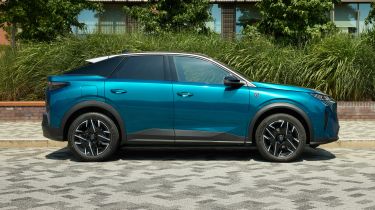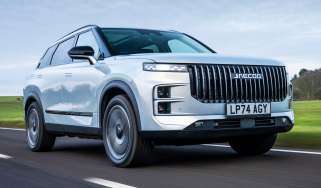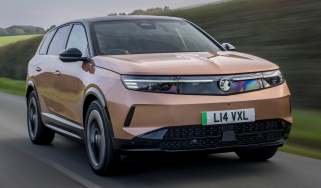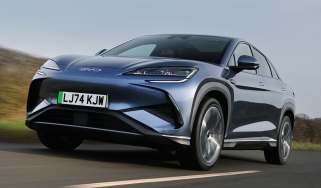Peugeot 3008 review - MPG, running costs & CO2 emissions
“The Peugeot 3008 is pretty efficient, but you’ll have to weigh this against its price versus rivals”
So far we’ve had the opportunity to test the mild-hybrid version of the 3008, which packs in a 1.2-litre petrol engine and a small electric motor and battery. The latter can harvest some energy as the car slows down and use it for short bursts of electric-only driving, but mainly it gives the petrol engine a helping hand to improve efficiency.
The result is diesel-like fuel economy of up to 52.5mpg, which is slightly better (on paper at least) than the fully-hybrid Hyundai Tucson, while the Nissan Qashqai’s top figure of 55.4mpg pips both.
While the Hybrid’s battery has a capacity of 0.9kWh, the plug-in hybrid boasts a 21kWh battery pack and a 123bhp electric motor, so it can drive along on EV power alone for up to 55 miles. This sees its official economy figure soar to 356.2mpg, but you’ll only get this if you plug in frequently and take mostly short trips.
| Model | Fuel economy | CO2 emissions |
| Peugeot 3008 Hybrid | 52.5mpg | 122g/km |
| Peugeot 3008 Plug-in Hybrid | 356.2mpg | 18g/km |
How much will the Peugeot 3008 cost in tax?
The 3008 Hybrid in both Allure and GT trim comes in under £40,000, so it will cost the discounted rate of annual VED (road tax) thanks to its hybrid status. Step up to the PHEV, though, and it bursts through the ceiling for the luxury car surcharge, so will be liable for a hefty VED bill in renewal years two to six.
What will the Peugeot 3008 cost to insure?
The 3008 Hybrid sits in insurance groups 22 and 24 for the Allure and GT trims respectively, which compares favourably to the Nissan Qashqai in groups 21 to 32.
Which Is Best?
Cheapest
- Name1.2 Hybrid 136 Allure 5dr e-DSC6
- Gearbox typeSemi-auto
- RRP£35,660
Most Economical
- Name1.6 Plug-in Hybrid 195 Allure 5dr Auto
- Gearbox typeSemi-auto
- RRP£40,750
Fastest
- Name1.6 Plug-in Hybrid 195 Allure 5dr Auto
- Gearbox typeSemi-auto
- RRP£40,750
















